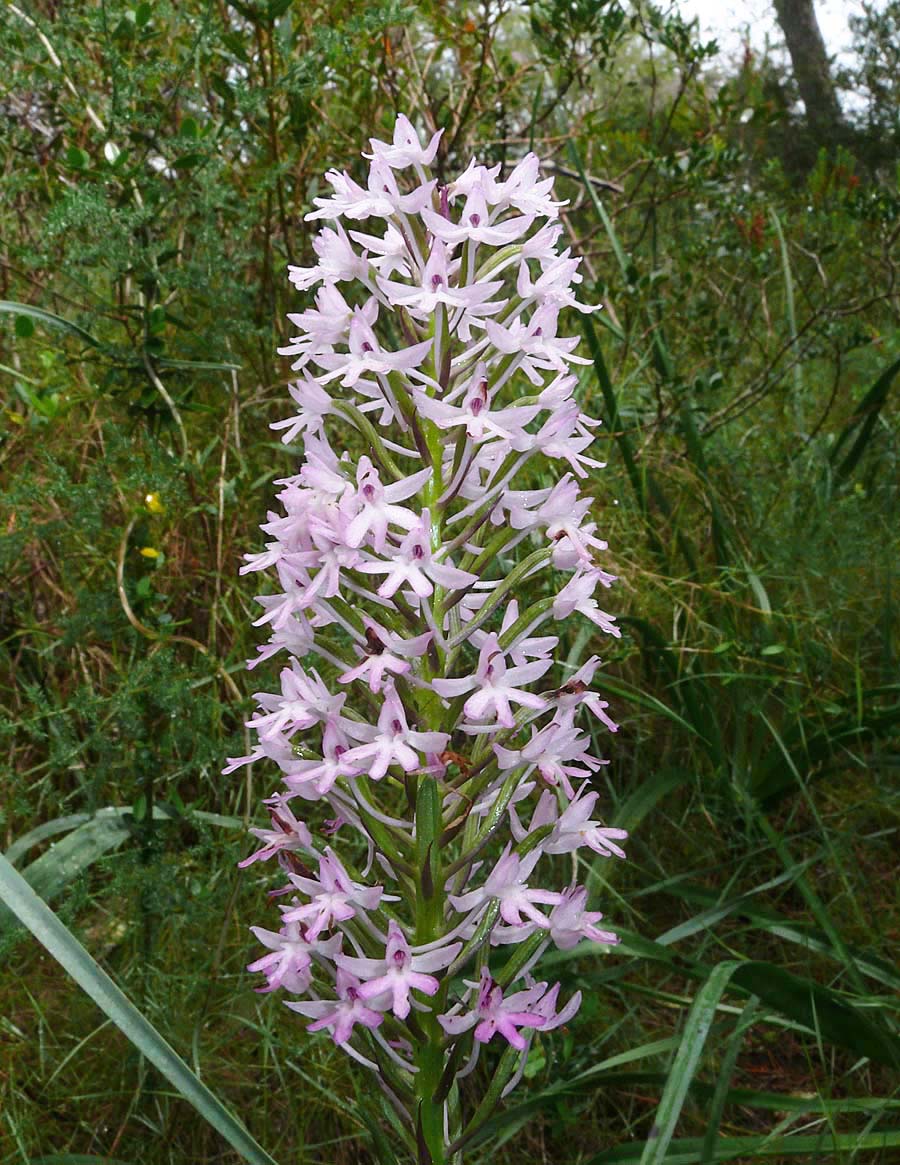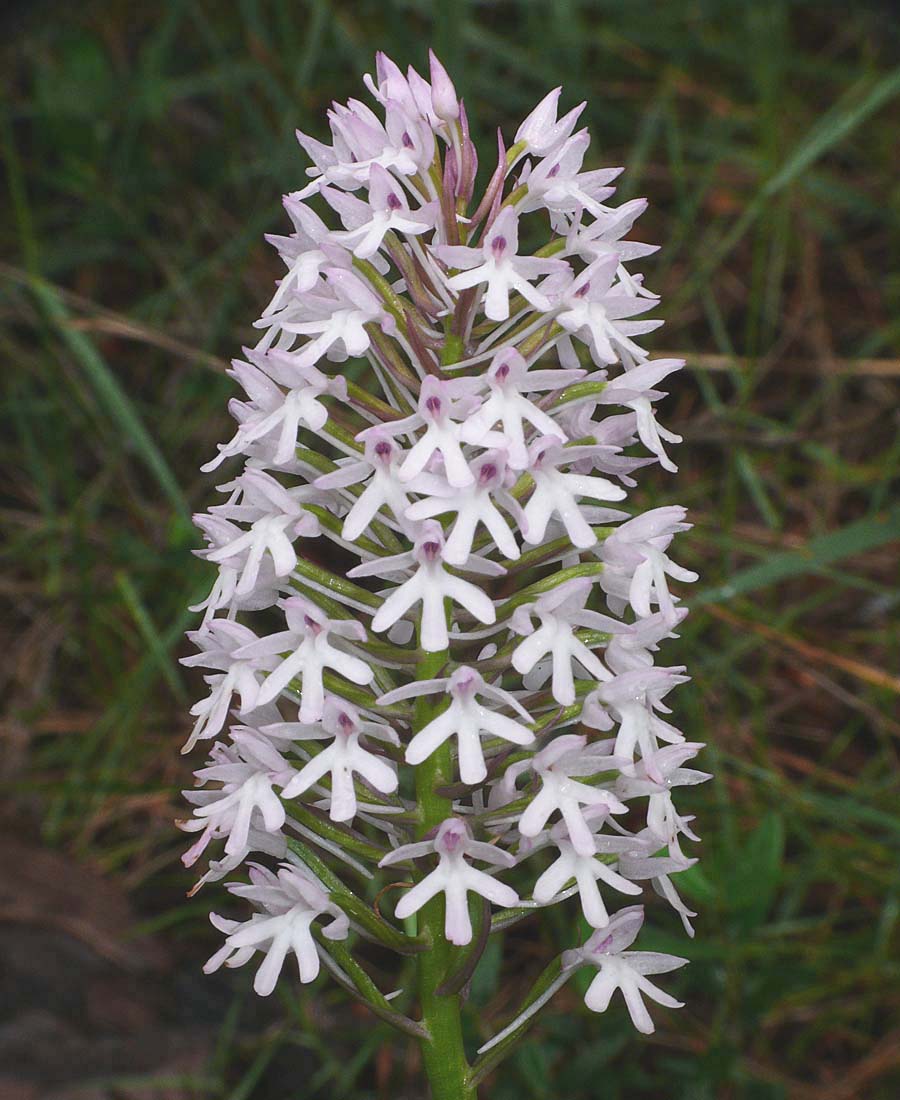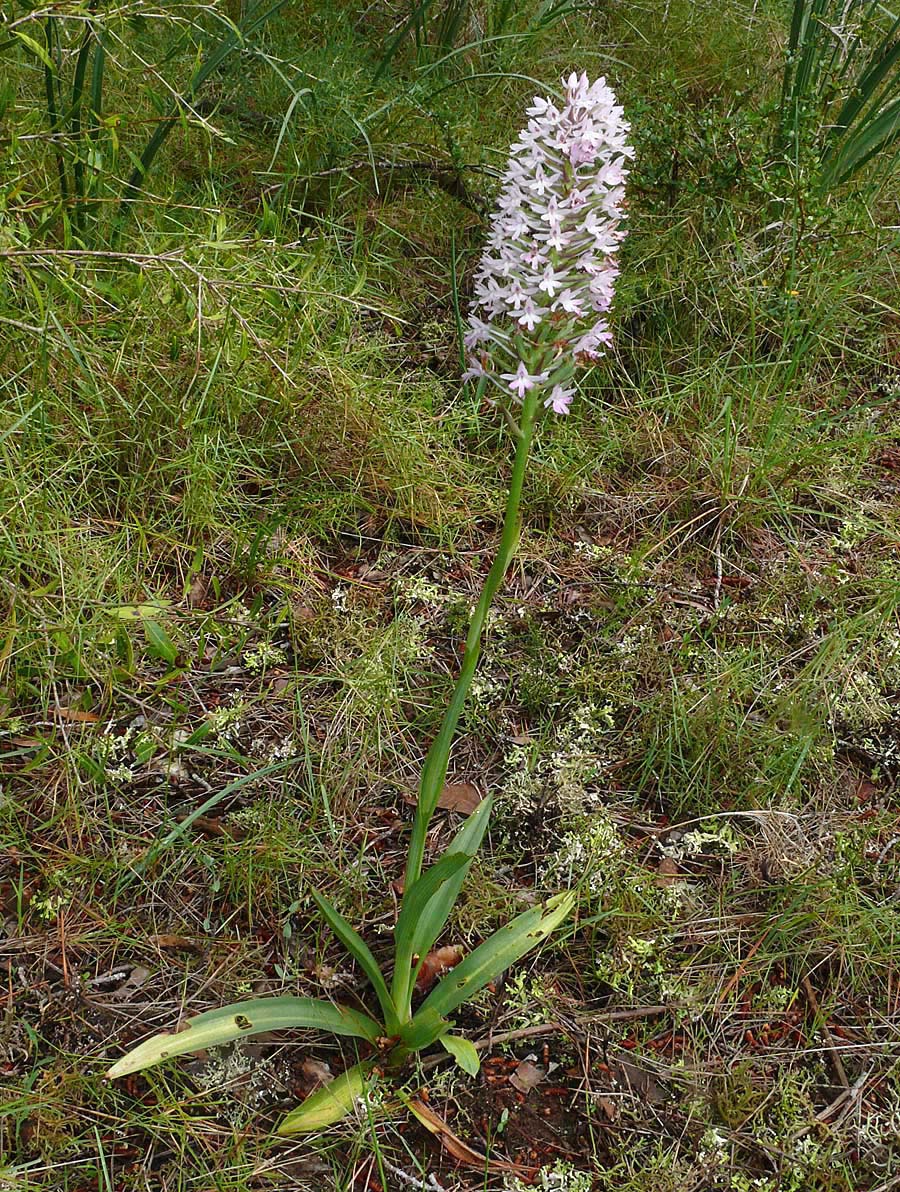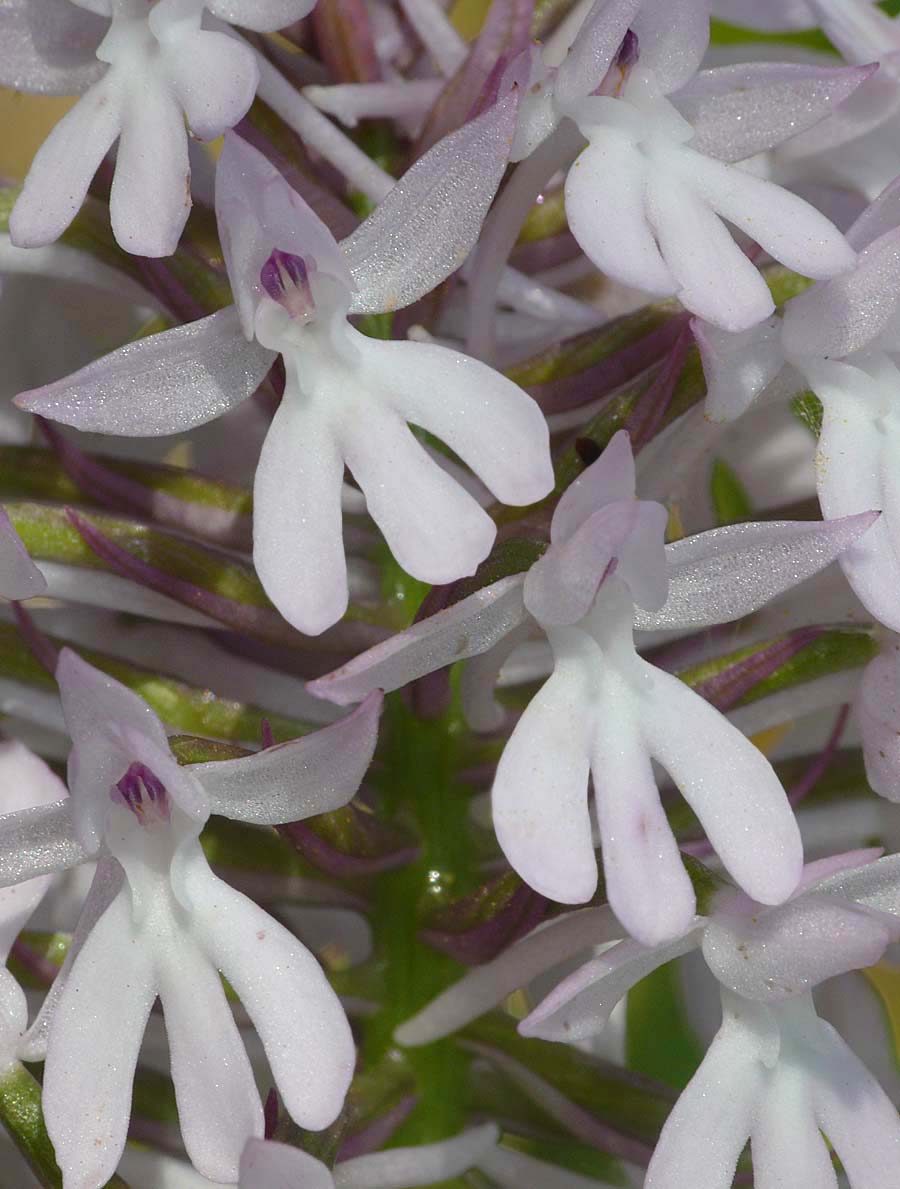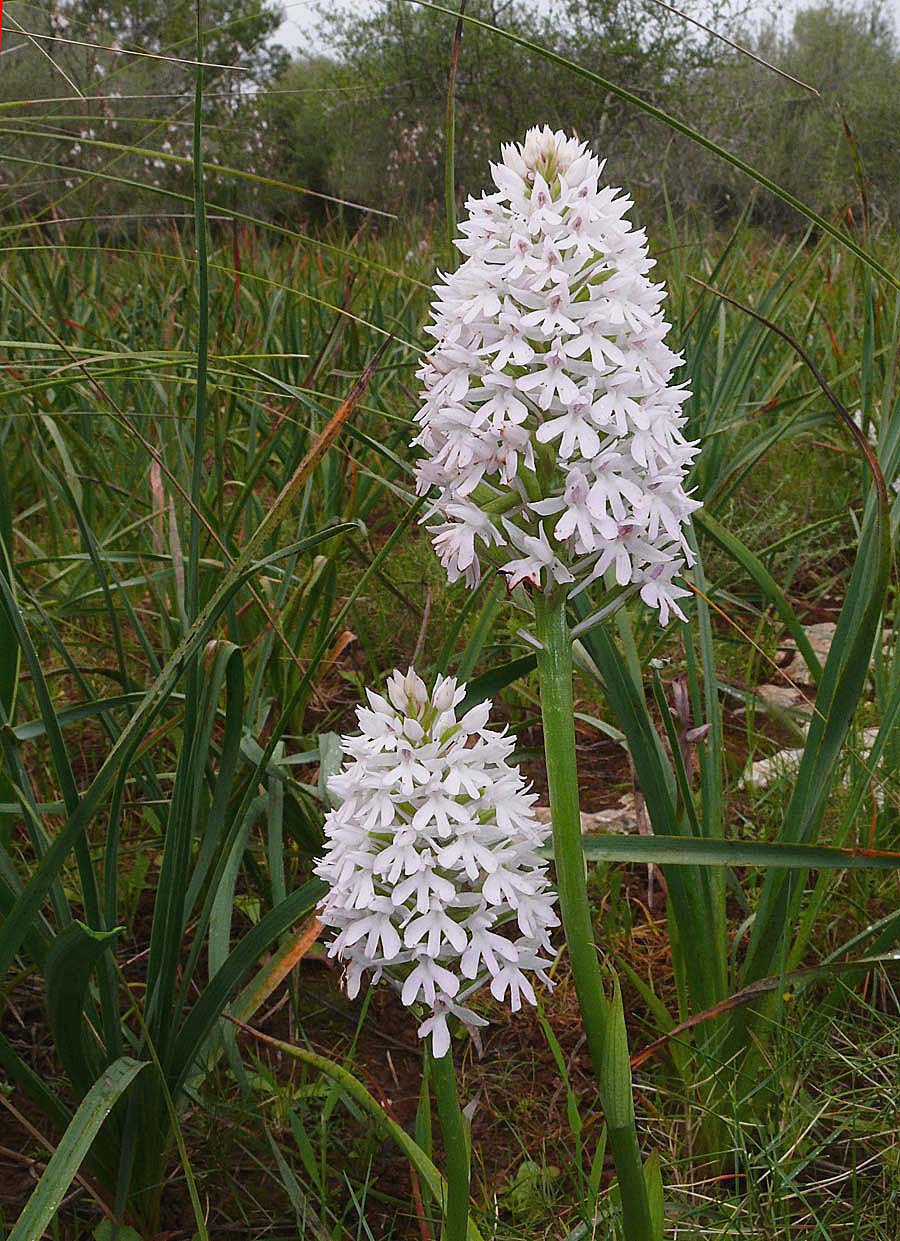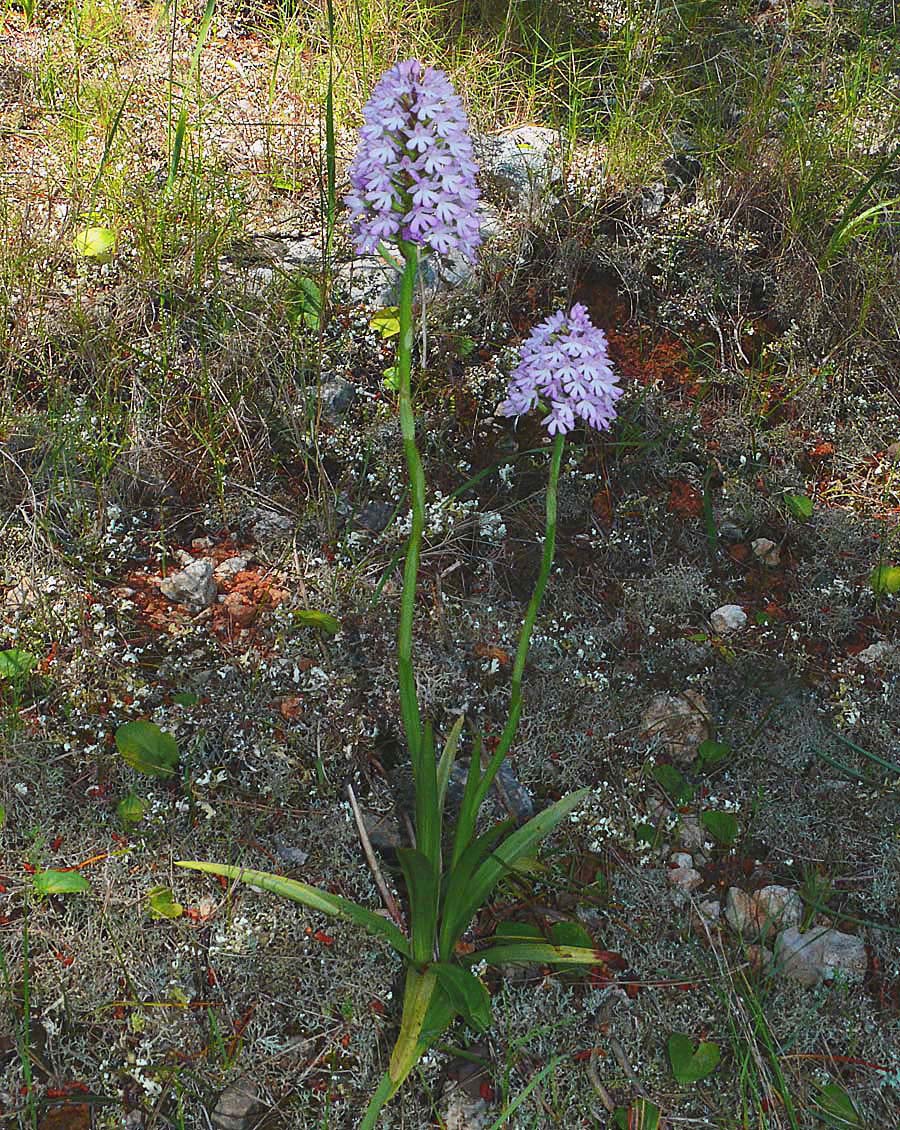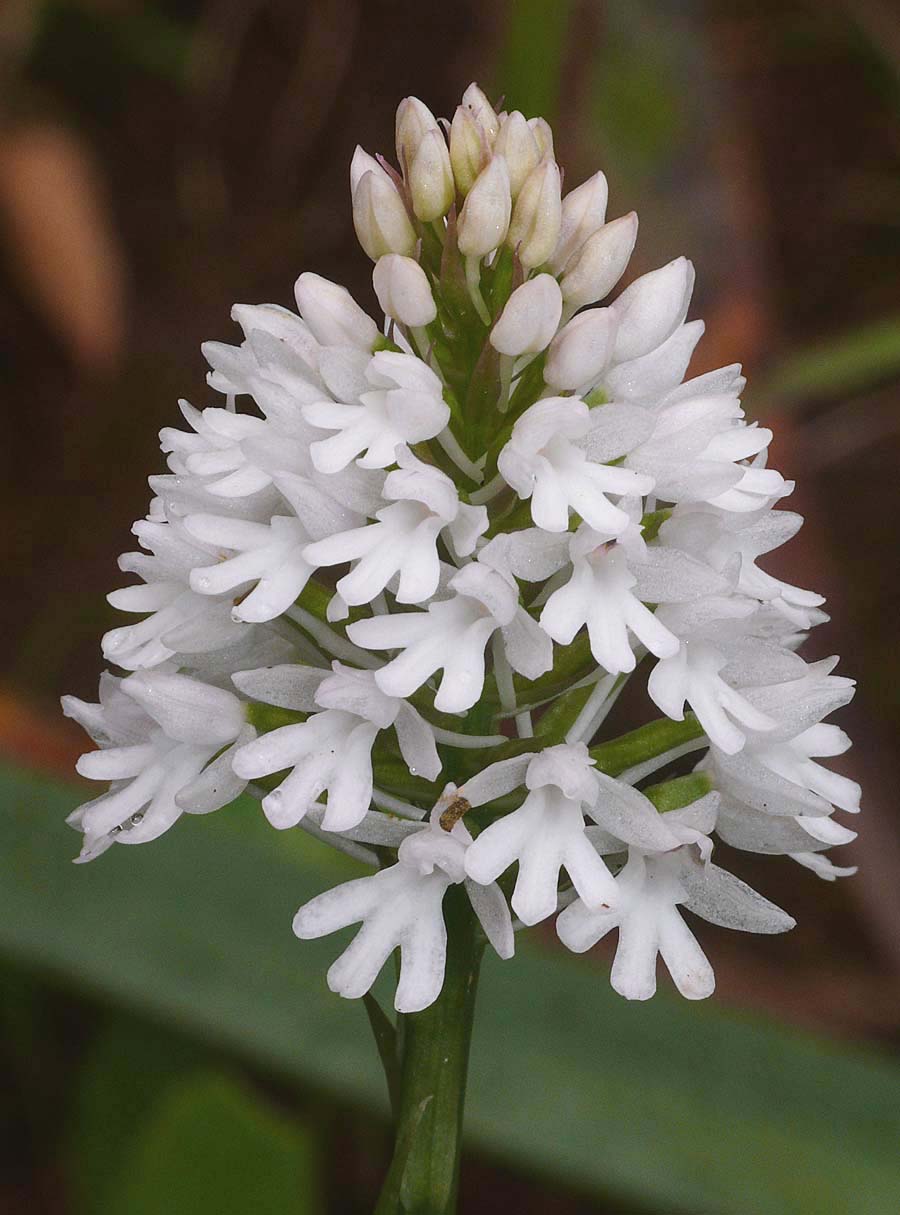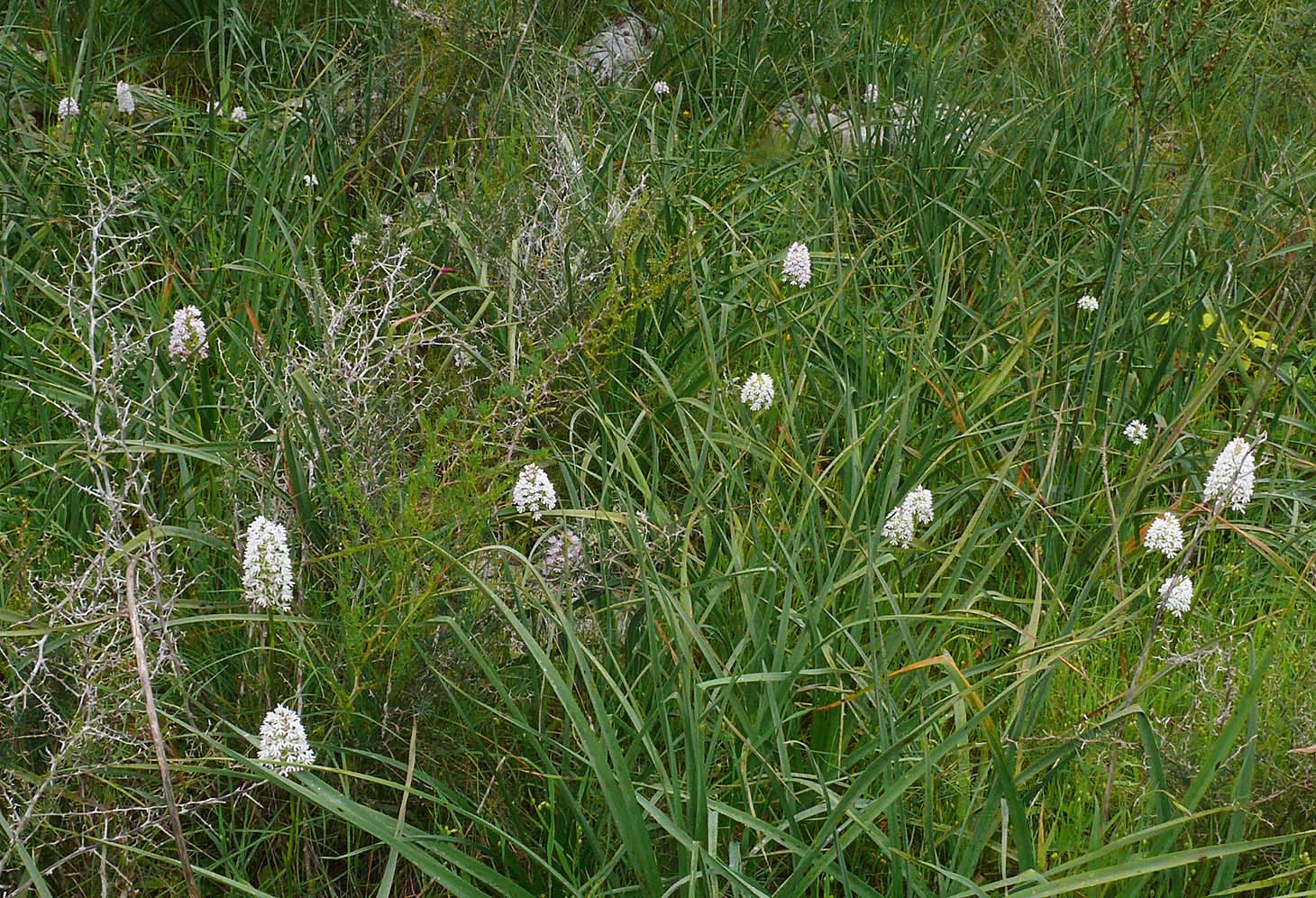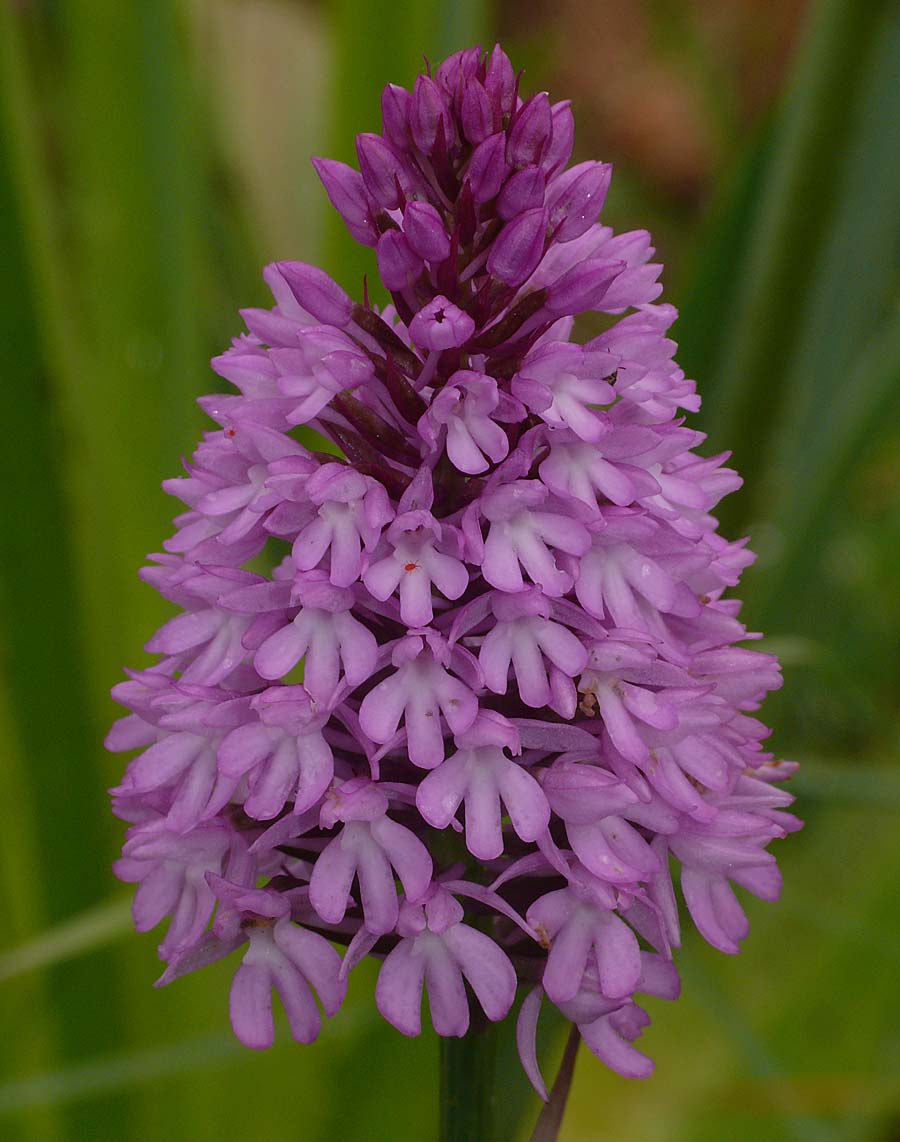A. pyramidalis
was first described by L.C.M Richard from Oxford (Britain)
in 1753 and its name alludes to the pyramidal
shape of the inflorescence. Several forms, varieties and subspecies
have been formally described and named over the years, but despite the
highly individual characteristics possessed by the plants illustrated
here, it has not as yet been the subject of a scientific paper and
therefore remains formally unrecognized. It should be stressed at
outset therefore that any name currently applied to it must be regarded
as a "nomen numun" until its taxonomic status is officially settled.
It has been known to the botanical world for several years but has only recently received any degree of close attention. The noted German botanist Helmut Presser reported its presence in southern Mallorca, citing its differing characteristics and suggesting the plant should be regarded as a regional subspecies. He did not however follow this up with a paper and neither did he offer a name. This orchid has been discussed elsewhere and has even been referred to by a Spanish botanist as Anacamptis pyramidalis subsp. praecox, a name which would be appropriate but as mentioned earlier, entirely without validity.
The plant is typically tall with a cylindrical inflorescence, considerably less dense than the type species. The individual flowers also differ in the length of the lip, which is formed by three narrowly elongated lobes of virtually equal length. Colouration is predominantly white or very pale pink, though as seen in the final photo, can extremely rarely be full pink. The most significant differentiating characteristic is however its flowering period which commences in mid March and sees the plant declining by mid April and over by the time the normal form appears at the beginning of May. This early flowering variant seems to be confined to the Santanyi district of Mallorca but may possibly be present elsewhere in the Balearics.
It has been known to the botanical world for several years but has only recently received any degree of close attention. The noted German botanist Helmut Presser reported its presence in southern Mallorca, citing its differing characteristics and suggesting the plant should be regarded as a regional subspecies. He did not however follow this up with a paper and neither did he offer a name. This orchid has been discussed elsewhere and has even been referred to by a Spanish botanist as Anacamptis pyramidalis subsp. praecox, a name which would be appropriate but as mentioned earlier, entirely without validity.
The plant is typically tall with a cylindrical inflorescence, considerably less dense than the type species. The individual flowers also differ in the length of the lip, which is formed by three narrowly elongated lobes of virtually equal length. Colouration is predominantly white or very pale pink, though as seen in the final photo, can extremely rarely be full pink. The most significant differentiating characteristic is however its flowering period which commences in mid March and sees the plant declining by mid April and over by the time the normal form appears at the beginning of May. This early flowering variant seems to be confined to the Santanyi district of Mallorca but may possibly be present elsewhere in the Balearics.
